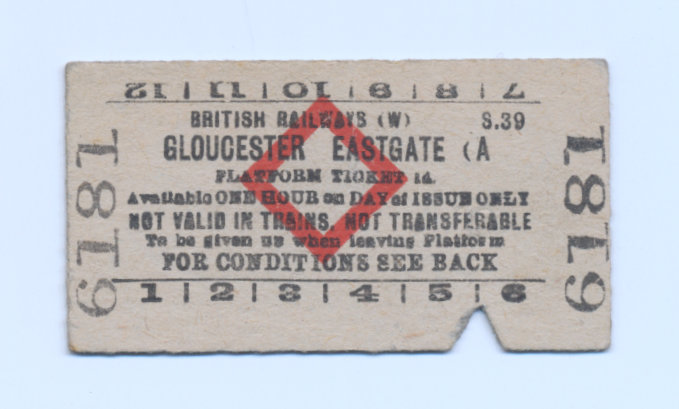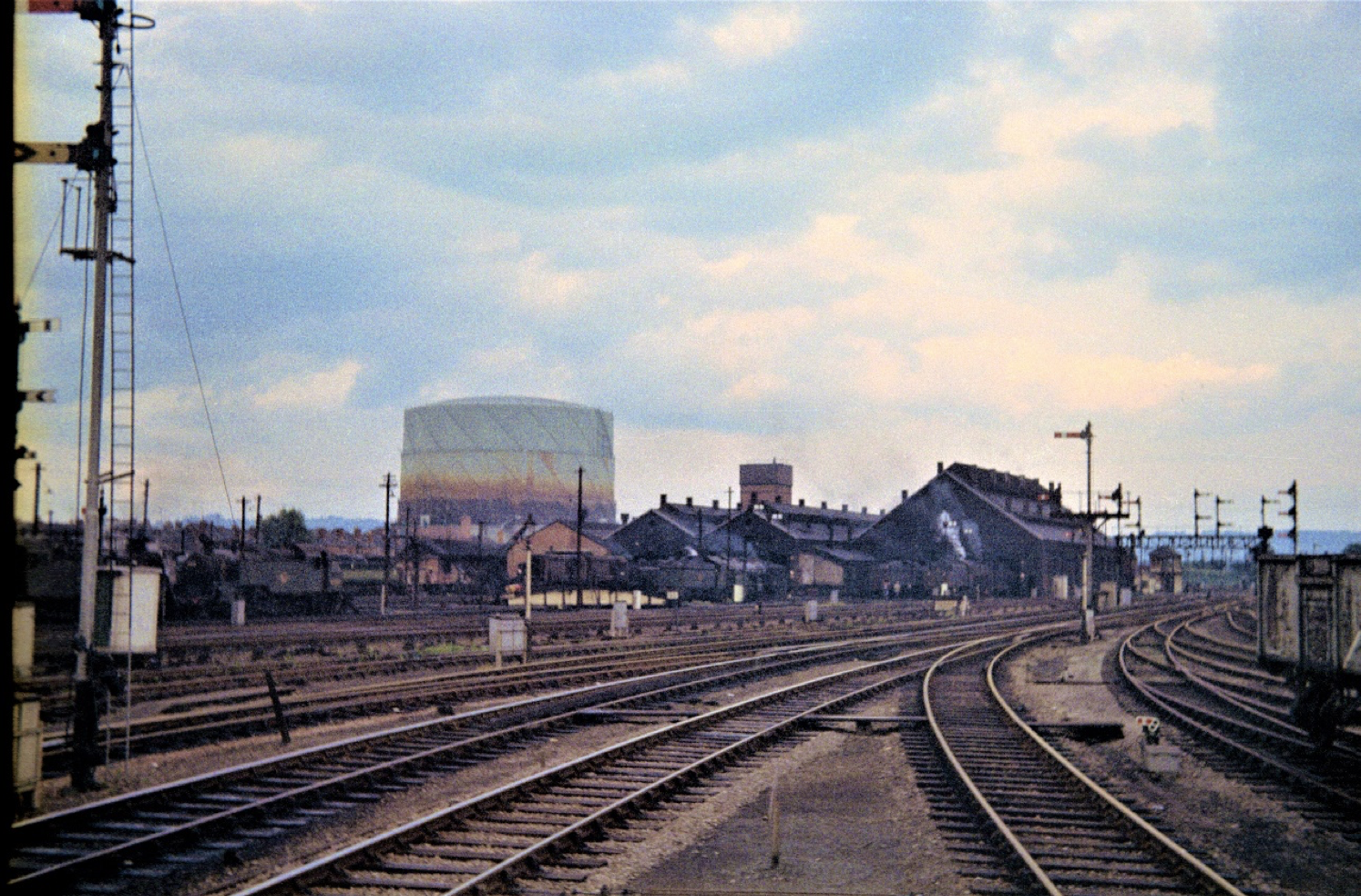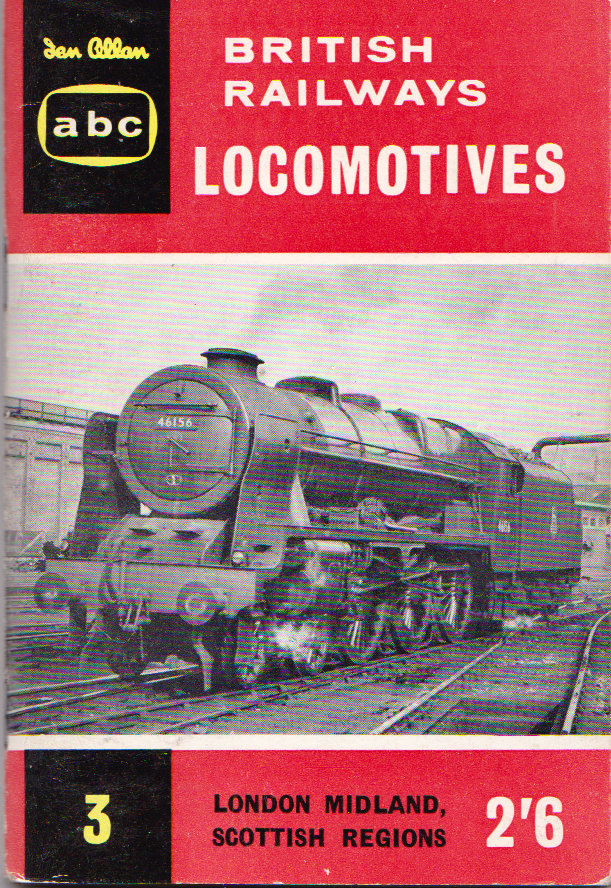Background to Gloucester’s Railways
It is safe to say that there has been an element of bi-partisanship amongst the railway fraternity in Gloucester ever since the ‘Battle of the Gauges’ in the 1840’s, when Brunel’s broad-gauge Bristol & Gloucester Railway met the standard-gauge of the Birmingham & Gloucester Railway. This resulted in the need to transfer goods and passengers between trains at Gloucester until 1848 when the line to Bristol was converted to mixed gauge. Through running on the standard-gauge was made possible by 1854 with the opening of the Tuffley loop, and the route between Birmingham and Bristol became one of the main limbs of the Midland Railway. Soon only the Cheltenham & Great Western Union branch from Swindon, taken over by the Great Western Railway, remained broad-gauge. Even so, differences remained after the end of the broad-gauge locally in 1872, beyond the formation of the ‘Big Four’ in 1923 and Nationalisation in 1948. It was not until 1958 with the adjustment of the BR regional boundaries that motive power on the Bristol to Birmingham route came under the control of the Western Region, when the former Midland MPD at Barnwood (22B) was transferred to the Western Region as 85E, eventually becoming 85C. By 1964, when Barnwood was closed, and all the ex-Midland men and remaining LMS locos had transferred to the ex-GW MPD at Horton Road (85B), diesels had largely usurped steam. Throughout this account, I will refer to as ‘Midland’ or ‘Western’, for what became, under the aegis of British Railways the London Midland Region or the Western Region.
Consequently, there has always been rivalry between the two railway companies: for example, Midland and Western men always drank on different sides of the bar at the ’Windmill’ public house in Windmill Parade, adjacent to Horton Road level crossing. The level crossing was operated manually by gatemen under the supervision of Tramway Crossing signal box. The name derives from the Gloucester & Cheltenham Tramway, which once cut diagonally across the line of the railway at this location. The tramway was opened in 1811 to transport building stone from Leckhampton to Gloucester Docks, and coal to Cheltenham. Part of the route is still traceable: a short section of Old Tram Road still exists from Albion Street opposite the dock entrance to the rear of Brunswick Square. Further east, the tramway followed the southern boundary of railway land to Gloucester Upper Yard before crossing Horton Road and following a footpath that led to the rear of Barnwood Shed.
My earliest recollections of railways in Gloucester were associated with the Midland, probably because my family lived with my grandparents until 1949 close to the railway on the Tuffley Loop about a mile south of Eastgate station. The house at 5 Tredworth Road was near what the Midland euphemistically called Painswick Road Crossing, although native Gloucestrians always referred to it as ‘Tredworth Gates’ (most level crossings in Gloucester were referred to as ‘Gates’). An examination of an early Ordnance Survey map shows that when the line was built in the 1850s, the area was in open country and the lane did eventually lead to Painswick. From the front-room window of my grandparents’ house, a variety of steam locomotives could be spotted, including ‘Jubilees’ which were the largest ex-LMS locomotives officially allowed through Gloucester in the 1950s.
Gloucester Midland station (after nationalisation named Eastgate to distinguish it from the GW Central station) was opened in 1896, replacing the original terminus next to the GW station, and survived little altered until its closure on 1 December 1975. It certainly retained its gas lamps into the 1960s. Owing to the number of level crossings on the Tuffley loop line into Eastgate station, there were three signal boxes each with their attendant signals controlling the crossing gates. Painswick Road crossing was protected from northbound trains by a tall double semaphore with a banner repeater. If the distant was ‘off’, this indicated that the signal at the next level crossing, California Crossing was off; and if the banner signal was off, a clear road was available across Barton Street level crossing into Eastgate Station.
Southbound trains had the benefit of a short downhill stretch away from Eastgate over California Crossing as far as Farm Street crossing, but then a climb steepening to 1 in 108 up to Tuffley Junction ensued. As a result, loaded coal trains would occasionally stall on the climb, particularly if hauled by a ‘4F’ (or ‘Grids’ as we called them) that was not steaming well. Then the train engine would have to whistle for a banker, usually the Upper Yard pilot, to help them on their way as far as Tuffley Junction.


